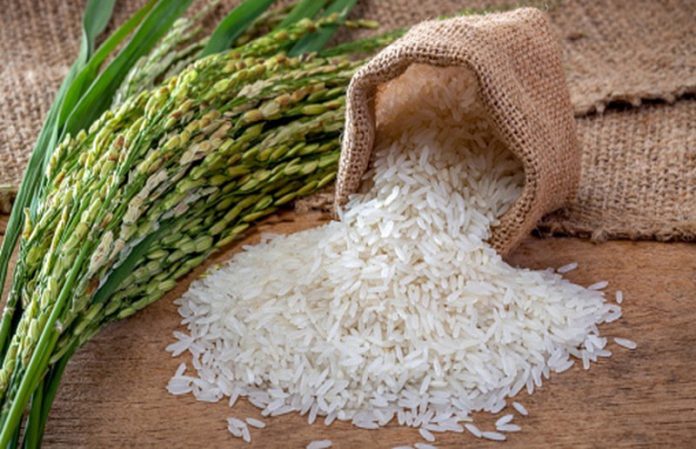Tags
Scientific evidence supports consumption of fortified rice: Food Min
By Daily Excelsior

NEW DELHI, Oct 17 : The food ministry on Thursday said scientific evidence suggests that the consumption of fortified rice is safe for all, including people suffering from haemoglobinopathies like thalassemia and sickle cell anaemia.
Earlier this month, the government decided to continue the supply of free fortified rice under the food law and other welfare schemes till 2028 with an outlay of Rs 17,082 crore, a move aimed at reducing anaemia and micro-nutrient deficiency.
The rice fortification process involves the addition of Fortified Rice Kernels (FRK) enriched with micro-nutrients (iron, folic acid, Vitamin B12), as per standards prescribed by food regulator FSSAI to regular rice (custom milled rice).
In a statement on Thursday, the food ministry said the Centre is continuing its ambitious initiative of supplying fortified rise as a complementary strategy to combat micronutrient deficiencies in the country.
“Needless to say, scientific evidence supports consumption of Fortified Rice is safe for all, including for individuals suffering with haemoglobinopathies, such as Thalassemia and Sickle Cell Anaemia,” the ministry said.
It noted that fortified rice packaging in India was initially required to carry a health advisory for individuals with thalassemia and sickle cell anaemia, as per the Food Safety and Standards (Fortification of Foods) Regulations, 2018.
The necessity of this advisory was questioned by a scientific committee, noting that no other country mandates such advisory label on packaging, the statement said.
In response, the Department of Food and Public Distribution established a working group in 2023 to assess the safety of iron-fortified rice for people with these hemoglobinopathies.
The working group’s report concluded that current evidence does not support any safety concerns for such individuals, the ministry said.
“The iron intake from fortified rice is minimal compared to the iron absorbed during blood transfusions for Thalassemia patients and are treated with chelation to manage iron overload. Furthermore, individuals with Sickle Cell Anaemia are unlikely to absorb excess iron due to naturally elevated levels of hepcidin, a hormone that regulates iron absorption,” the statement said.
This assessment was followed by an extensive review conducted by a committee chaired by the Director General of the Indian Council of Medical Research (ICMR).
The committee, comprising experts in haematology, nutrition, and public health, conducted a thorough literature review on iron metabolism, the safety of iron doses from fortified rice, and global labelling practices.
Based on this global scientific review, the committee found no evidence suggesting that iron-fortified rice poses a health risk to individuals with these hemoglobinopathies.
A large community study in India, involving over 8,000 participants from tribal areas indicated that nearly two-thirds of patients with sickle cell disease experienced iron deficiency.
“No specific evidence exists regarding harm from consuming fortified rice for sickle cell anaemia or thalassemia,” the ministry said.
It is notable that organisations like WHO and the US Food and Drug Administration (FDA) also do not mandate such advisories on packaging.
“In India, where large-scale distribution of fortified rice has already taken place in states like Jharkhand and Maharashtra, with more than 2,64,000 beneficiaries in each state, no adverse health outcomes related to iron overload have been reported,” the statement said.
This further substantiates the committee’s recommendation to omit the advisory.
The committee recommended removing the advisory, which the Food Safety and Standards Authority of India (FSSAI) accepted.
The advisory was officially removed in July 2024, following approval by the FSSAI in its 44th meeting.
India’s rice fortification programme started in 2019 as a pilot programme and scaled up in a phased manner.
Fortification is a globally recognised practice, and India follows guidelines aligned with the World Health Organization (WHO).
According to WHO’s 2018 recommendations, rice fortification with iron is essential in countries where rice is a staple food.
“In India, with 65 per cent of its population consuming rice daily, iron-fortified rice is particularly relevant,” the ministry said.
Under the Pradhan Mantri Garib Kalyan Anna Yojana (PMGKAY), 520 lakh tonnes of fortified rice is to be procured annually.
Rice fortification is a well-established global practice.
According to the Global Fortification Data Exchange, 18 countries actively allow rice fortification, 147 support salt fortification, 105 have adopted wheat flour fortification, 43 endorse oil fortification, and 21 promote the fortification of maize flour.
“Advisory labels for individuals with Thalassemia or Sickle Cell Anaemia are not required in these countries,” the ministry asserted. (PTI)
https://www.dailyexcelsior.com/scientific-evidence-supports-consumption-of-fortified-rice-food-min/Published Date: October 18, 2024






